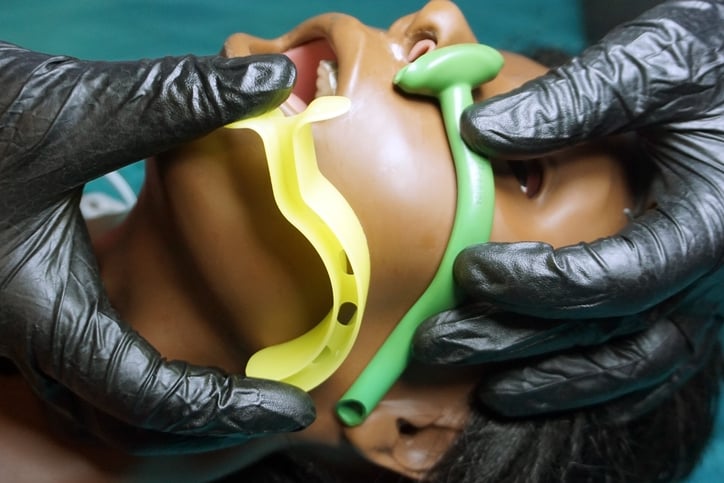
Both basic and advanced airway management can save lives. Neither is more important than the other, and neither is a “better” option. When basic airway management is the safest and most effective option, immediately escalating to advanced airway management can be immensely harmful.
The key distinction between these two approaches to airway management is that basic airway management requires much less training, no medication, and no medical equipment. Advanced airway management is more invasive. It typically requires extensive medical training, as well as the use of medication and medical devices.
Basic Airway Management
Basic airway management includes a group of skills that most people can learn, even without medical training. These life-saving skills often buy time before first responders arrive. In many cases, they prevent airway emergencies from occurring in the first place. Some examples of basic airway management include:
- Basic assessment. Basic airway management includes assessing the airway to provide important information to first responders and determine the appropriate treatment. For example, a person should see if a choking person is breathing or able to cough before intervening.
- Choking interventions such as the Heimlich maneuver and back blows.
- Encouraging a conscious person to cough.
- The finger sweep maneuver to clear the airway. Note that his maneuver is increasingly controversial because of the risks it poses, so some agencies no longer recommend training non-medical personnel in its use.
- Airway obstruction prevention tactics. This includes rolling an unconscious person onto their side to reduce the risk of aspiration in the event of vomiting. Another effective technique is the head tilt/chin-lift, which helps open the airway. This maneuver is safe to use with any patient who does not have a spinal cord injury.
- Basic suction techniques. Suction only as far as you can see, and for no more than 15 seconds.
- Mask oxygenation. Simple mask oxygenation is usually classified as a basic airway management technique because it requires little training.
Advanced Airway Management
Advanced airway management techniques require significant training. If administered by an untrained person, they present a high risk of injury. Some examples of advanced airway management include:
- Advanced airway assessment. Assessing a difficult airway is a challenging undertaking that’s also a key step for most airway management techniques.
- Airway suctioning. Airway suctioning can remove aspirated stomach contents, prevent airway obstructions during surgical procedures, and remove foreign objects trapped in the airway. More advanced suction techniques, such as the SALAD technique can facilitate the management of a difficult airway.
- Intubation. Intubation ensures that a patient can breathe even when there is damage to or an obstruction in the airway. There are numerous intubation techniques. Supraglottic techniques use tubing inserted through the nose or throat, while infraglottic techniques access the trachea. It is also possible to surgically intubate a patient, such as by using a cricothyrotomy. These techniques are generally reserved for patients who need long-term airway support, or for whom other airway management techniques have failed in an emergency.
- Medication. Certain medications may help clear the airway in an emergency. Some medications, such as an EpiPen for a child with allergies, may be safe for novices to use. Other uses of medication, such as the administration of epinephrine in other contexts, require extensive training.

Why Equipment Matters
Advanced airway management requires the right equipment. A portable emergency suction machine enables first responders to treat patients wherever they find them. With portable suction, you don’t have to undertake the risk of moving the patient or worry about long treatment delays due to transport. The right suction machine offers consistent, reliable suction that saves lives. It’s also easy to use with the right training. For help choosing an appropriate machine for your agency, download our free e-book, The Ultimate Guide to Purchasing a Portable Emergency Suction Device.
Editor's Note: This blog was originally published in March 2020. It has been re-published with additional up-to-date content.















